Dungeons & Dragons: From the Tabletop Game to the Movies
Before the 1970s, tabletop games focused on one of three genres: family board games, traditional games like chess, and wargames. However, this all changed in 1974, when Gary Gygax helped create TRS (Tactical Studies Rules) to release their vision of a fantasy role-playing game, Dungeons & Dragons. Originally inspired by Wargames, Gygax similarly designed his game to use the roll of the dice to decide the effectiveness of moves. However, he found six-sided dice to be limiting. Instead, he introduced 20-sided dice into his game.
As Gygax experimented with his concept, he introduced a prototype game, Chainmail, to a small gaming gathering that he called Gen Con. However, his concepts had too much magic to appease the fans of Wargames. Instead, he began to generate a new following amongst fantasy-lovers in the tabletop gaming scene. Most importantly, he met his future collaborator, Dave Arneson, as he hosted Gen Con.
As Gygax and Arneson ironed out the details of their fantasy role-playing game, they moved away from Chainmail. Instead, a new game began to take shape, Dungeons & Dragons. They expanded on the mythical creatures that Gygax created in Chainmail to create a larger fantasy landscape. They also laid down the foundation of rules that would dictate how players would explore this world.
However, one last obstacle lay in their way, publishers were not interested in the fantasy tabletop game. So, the pair decided to market the game themselves with the help of one of Gygax’s childhood friends. Thus, TRS was born to introduce 1000 copies of Dungeons & Dragons onto the market. Soon after, the company had a hit on its hands.
Join us on a brief history of the board game that changed the face of fantasy: Dungeons & Dragons
The game that started it all: TSR’s Dungeons & Dragons (1974)
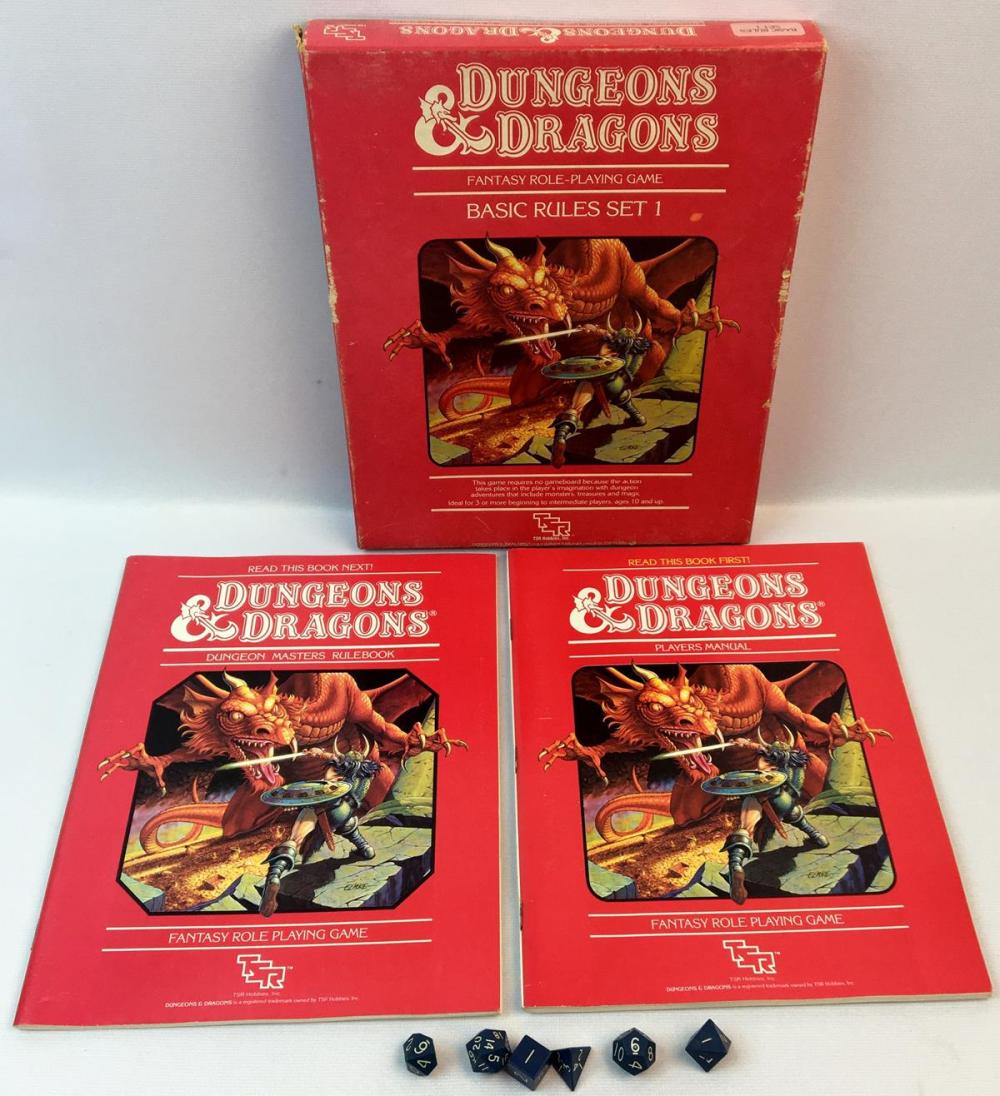
With the help of word-of-mouth support, TSR quickly sold the first 1000 rulebooks that they published for their new tabletop fantasy game. Since the company could only pull together a small budget of $2000 to design the game, the result was rather simplistic. Especially since only $200 of the budget went toward the publication’s artwork. Still, the novelty of the game allowed fans to look past the amateur production. Now, one of these original edition sets has the potential to sell for thousands on e-Bay.
Unlike the previously popular wargames, Dungeons & Dragons asked its players to pick character classes like the fighter or magic-user. The game also tasked them to decide whether their character was an elf, human, dwarf, or halfling. Each of these characters also rolled to determine their abilities from stats like strength, intelligence, and dexterity. From there, they set forth to defeat monsters and gather treasures from the board’s dungeon. Furthermore, players could travel via land and sea, expanding the options for play.
Even though they designed the game with miniature figures in mind, the rulebook allowed players to substitute these figures with cardboard counters. On the other hand, the game assumed that players had familiarity with Gygax’s prior game, Chainmail. For, it reused the measurement and combat systems from that board game.
Advanced Dungeons & Dragons
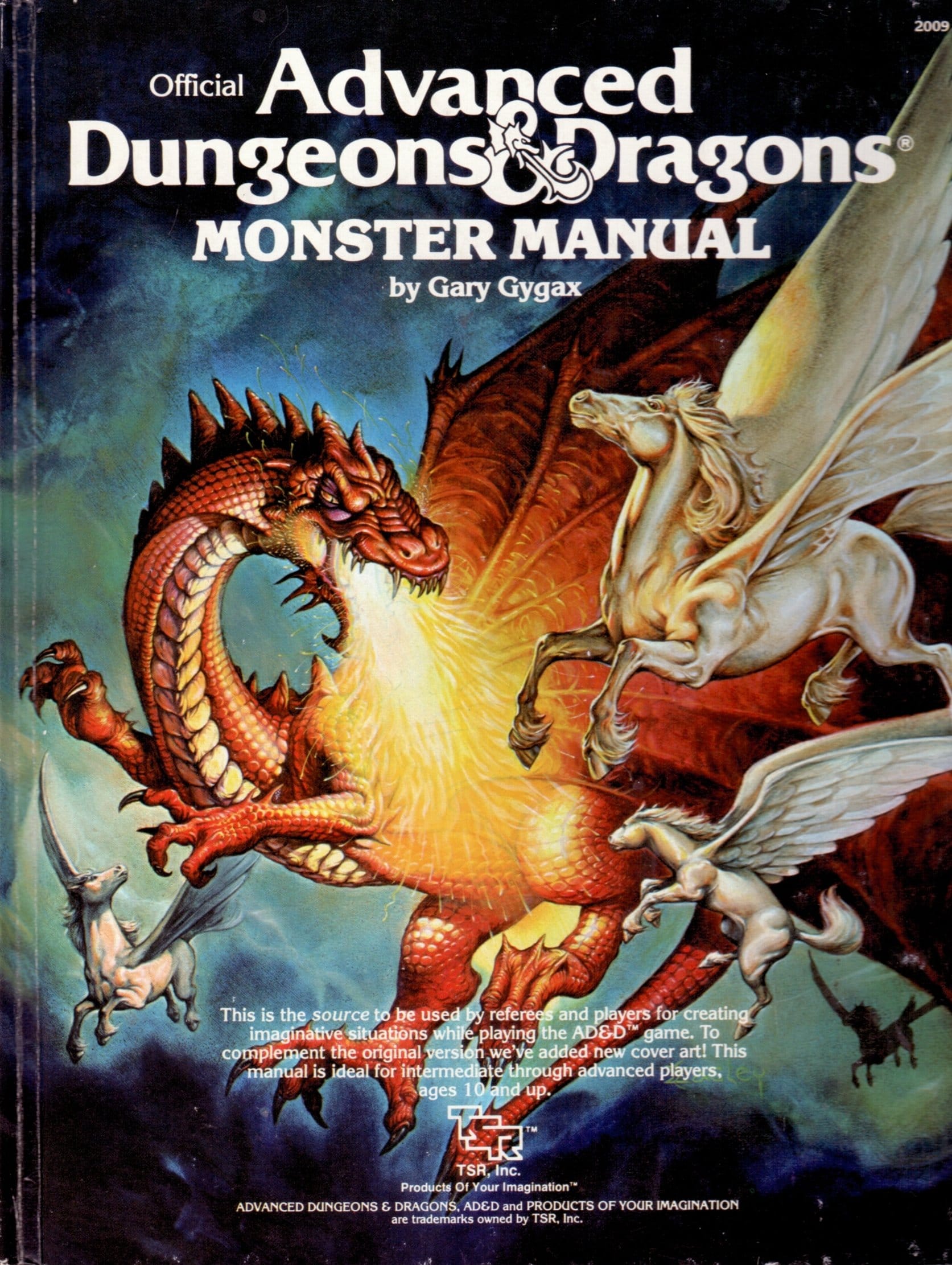
By 1977, TSR’s hit board game evolved into a new form, Advanced Dungeons & Dragons, with a new set of rules. Rather than becoming a simple expansion of the original game, the new game created rules that were incompatible with the original. However, this new format of the game greatly expanded the range of classes available for players. Now, they could create characters that were assassins, druids, paladins, thieves, and more. Also, the alignment system expanded to allow players to pick from a range of nine distinct types, from lawful-good to chaotic-evil.
However, this new edition created multiple issues for players of the game. First, TSR lacked the funds to release all three rulebooks at the same time, so they could only release them over the course of three years. Thus, several players lacked the understanding of how to even play this updated version of the game.
Seeing that they had created a complex strategy game, TSR also decided to welcome in new players with a basic edition. By outsourcing the work to J. Eric Holmes, TSR was able to release this edition in 1977 as well as the Advanced edition. However, the game limited players to the first three levels. After which, TSR hoped that players would move on to Advanced Dungeons & Dragons.
Despite the growing popularity of the game, TSR faced financial hurdles that doomed the company. In many ways, the company mismanaged its assets during the 1980s. By 1986, Gygax broke his ties with the company. Then, in 1997, Wizards of the Coast purchased TSR. Thus, every edition after 2000’s 3rd edition came out under their management.
Marvel Productions’ Dungeon’s & Dragons Carton (1983-1985)
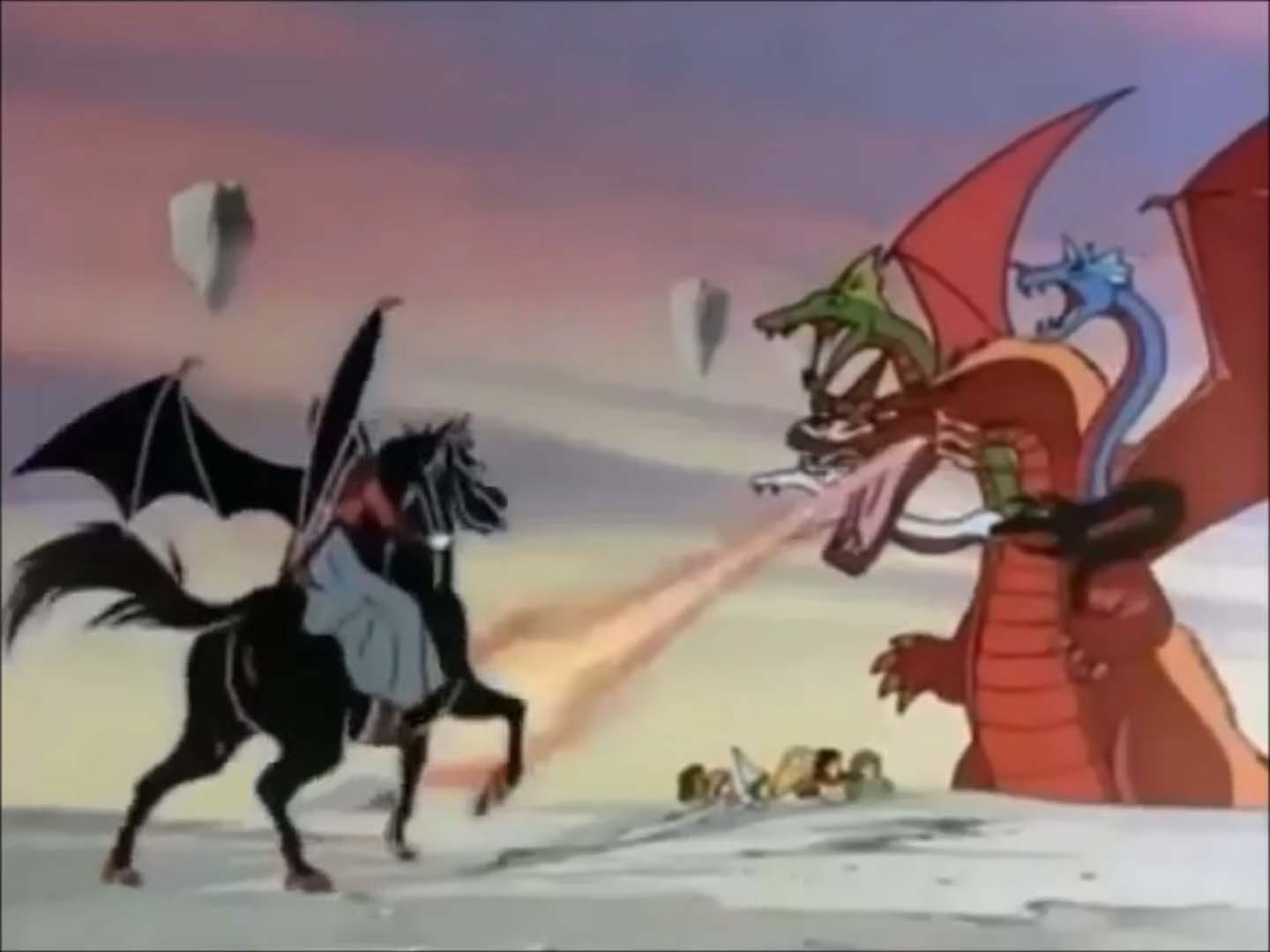
At the height of Dungeon & Dragons’ popularity during the 1980s, something TSR never dreamed of began to form thanks to the media, the Satanic Panic. Wrapped up in the mass hysteria, the game began to remove all references to demons and the occult. They also desired to improve their image with the parents of children. As the controversy brought attention to Dungeons & Dragons, TSR created a department dedicated to licensing out the game to the media. So, they managed to convince Marvel Productions that Dungeons & Dragons would make an excellent Saturday morning cartoon.
Unlike many other licensed cartoons in the 1980s, the Dungeons & Dragons cartoon was not essential to cementing the popularity of the game. Instead, the cartoon helped support the already-created toys from LJN and the popular tabletop game. Also, the game had no set character storylines to follow, for it welcomed players to use their imaginations.
Thus, Marvel decided to create a set of six children who found themselves transported to the world of Dungeons & Dragons thanks to a carnival ride. Each of these friends gained the tools and powers of some of D&D’s standard classes, such as Presto becoming a magician, thanks to the Dungeon Master. They then had to survive in the world as they battled the evil forces of Venger and Tiamat.
Dungeons & Dragons (2000 Film)
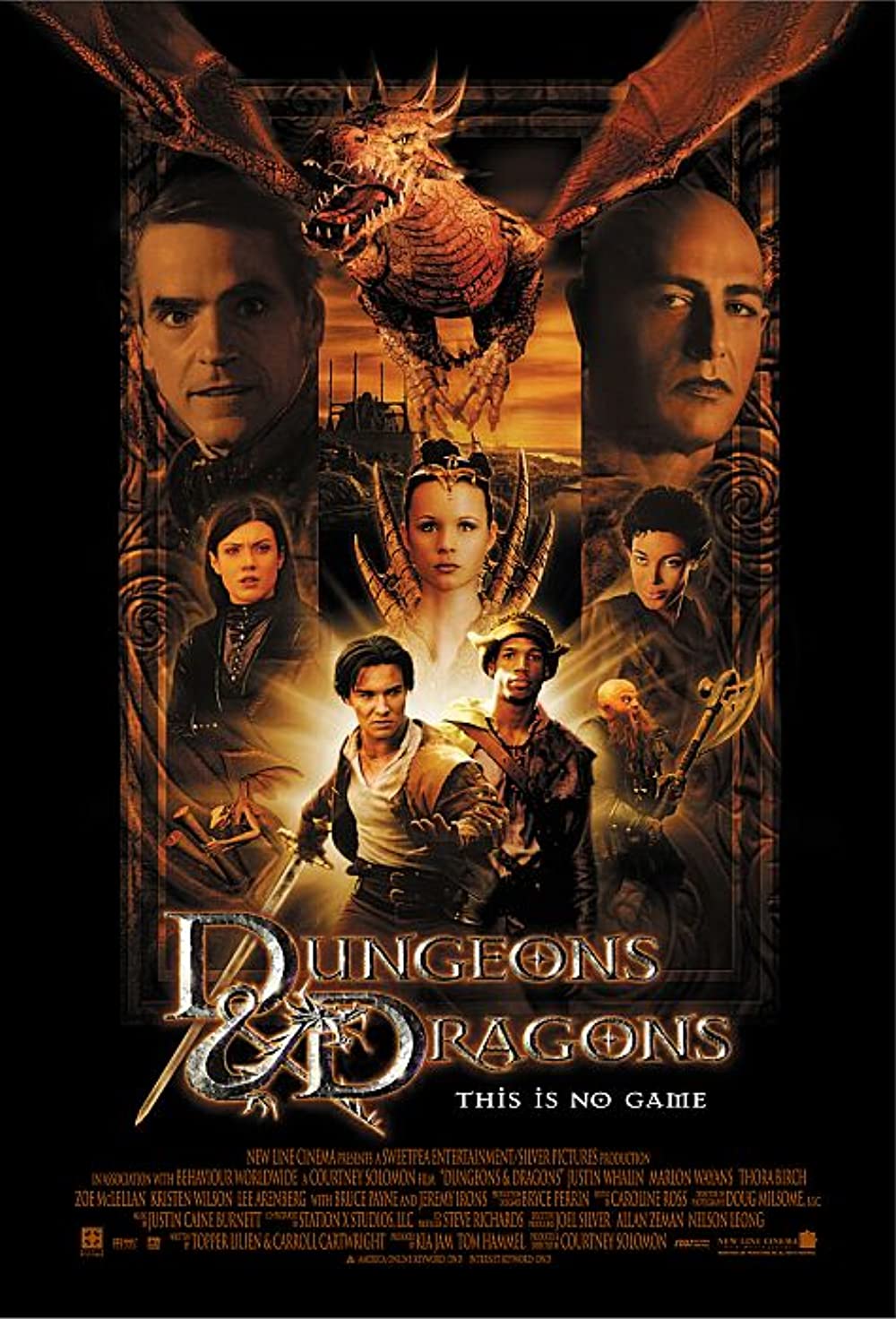
Years after Gary Gygax initially attempted to sell the idea of a Dungeons & Dragons movie to Hollywood, New Line Cinema started up production on the Dungeons & Dragons movie. During his time as the president of TSR Entertainment, Gygax hoped to start production on a movie that starred Orson Welles. However, nothing ever came out of that project.
Instead, a Canadian boy, Courtney Solomon, came around in 1990 to buy up the rights for a Dungeons & Dragons movie. To carry out this feat, he created Sweetpea Entertainment. However, the 19-year-old had very little experience in the film industry, only having helped his mother’s freelance production company. Still, he dreamed of turning Dungeons & Dragons into an epic trilogy akin to Star Wars.
After years of rewrites, Solomon took on the challenge of directing the film. Supporting his vision, he signed on Marlon Wayans, Justin Whalin, Thora Birch, and Jeremy Irons as the stars for the film. Despite the high-profile names, the film could not escape its shortcomings. Overall, the inexperience of Solomon led to a poorly directed film with wooden dialogue from several characters. Moreover, the movie had undertones that felt directly stripped from the worst of the Star Wars prequel films, the Phantom Menace.
In the end, the film flopped, failing to entertain audiences. Despite its failures, it still managed to produce two direct-to-DVD films.
The Wrath of the Dragon God (2005)
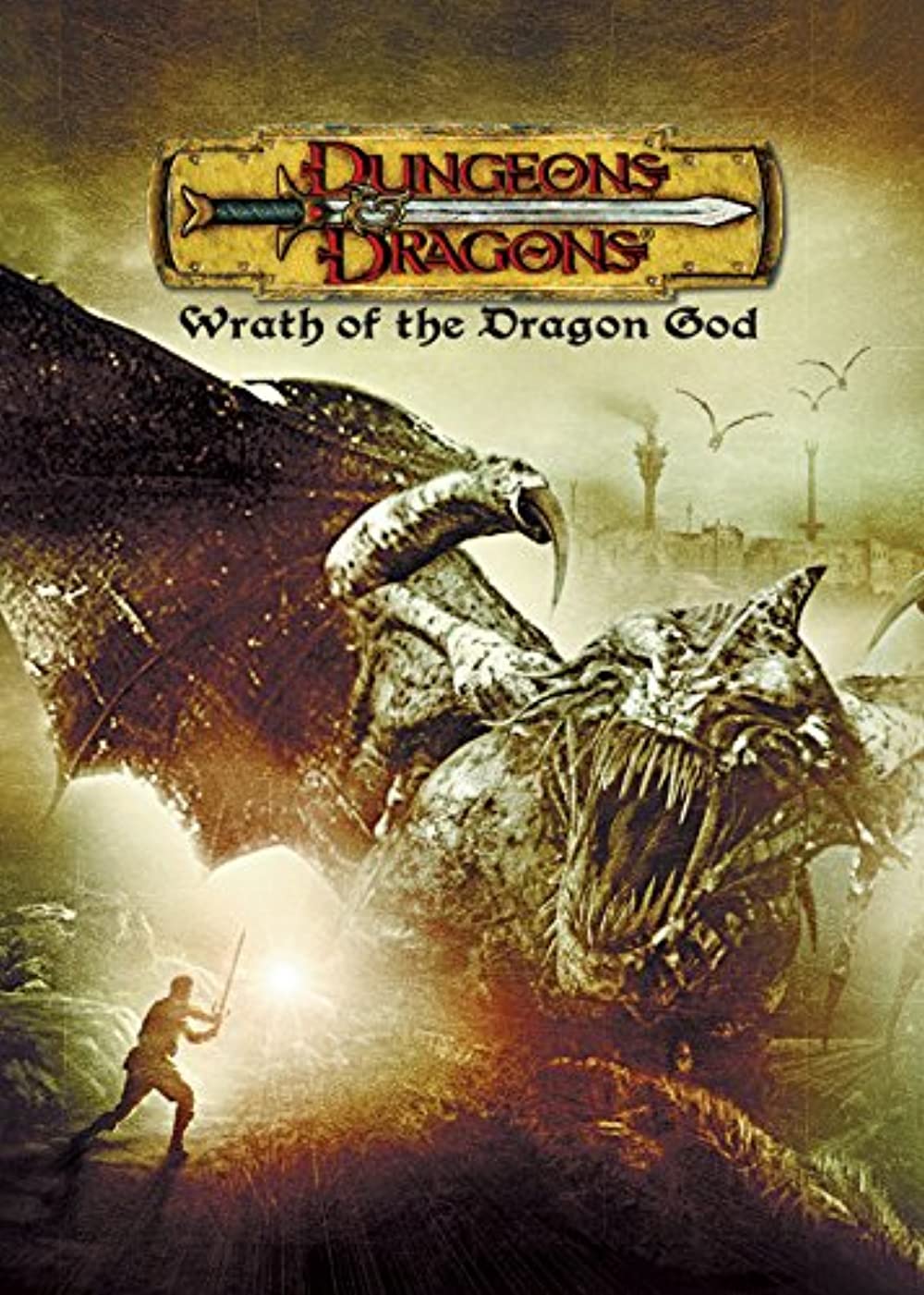
After the lackluster performance of the original Dungeons & Dragons movie, which attempted to recover with a stand-alone sequel. This time, Gerry Lively sat at the director’s seat while Brian Rudnick and Robert Kimmel wrote the script. Unlike the original film, this one made its debut on the Sci-Fi channel in 2005. Unsurprisingly, this also meant a much smaller budget.
Picking up a hundred years after the events of the original D&D film, one of the villains from the original film, Damodar, returned as a cursed undead. So, he began a quest to seek revenge against the kingdom of Izmir. To realize his goals, he began by hunting down the Orb of Faluzure, which removed his curse. This orb also gave him the power to awaken a dragon god.
Otherwise, the film starred a new cast of adventurers, who tried to save the world from the dangers that the dragon and orb represented. Still, they were incapable of preventing the awakening of the dragon god, Falazure. Luckily, these adventurers deciphered the secrets of the Turanians that allowed them to seal the dragon god once more.
Even though this film received terrible reviews, it managed to keep the Dragons & Dungeons movies alive. Thus, six years later, a new entry into the franchise appeared.
The Book of Vile Darkness (2012)
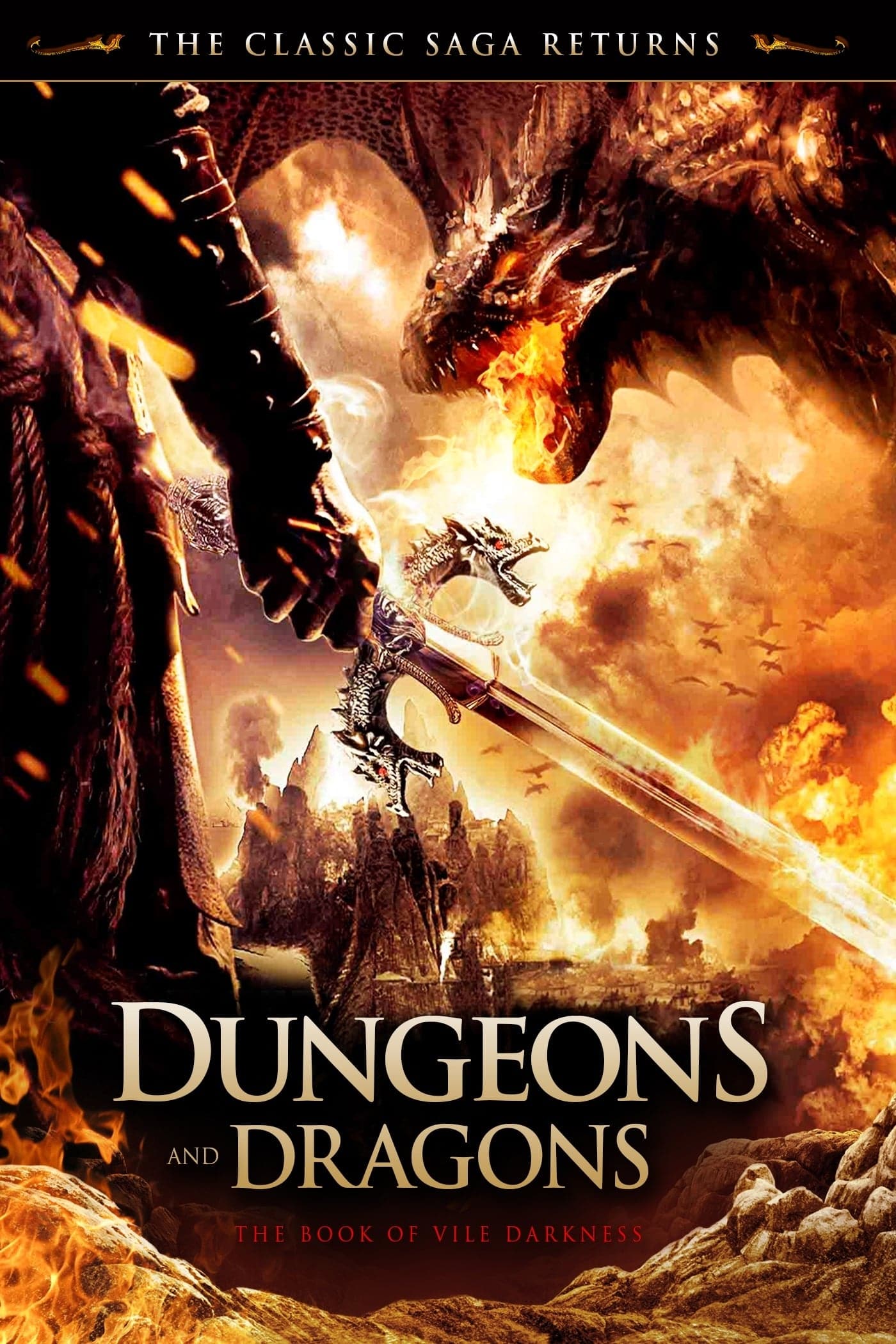
Unlike its earlier installment, the Book of Vile Darkness did not even appear on cable television before it went to DVD. Instead, this film gained an even smaller budget than the second film as it headed directly to DVD. Despite the poor performance of the first sequel, Gerry Lively returned to direct the final Dungeons & Dragons film to date. Likewise, the same two writers from the second film returned as well.200
This time, the plot followed a completely new cast of characters with a new threat from a book that formed from the remains of an evil sorcerer, Nhagruul. Originally, the Knights of the New Sun gained the power to overcome the book’s evil thanks to an amulet from the God of light, Pelor. However, after 2000 years of peace, the existence of the book faded along with the power of the knights.
As Grayson became the newest paladin for the order, he discovered that the amulet refused to grant him the power of the light god. Meanwhile, Barbarians murdered the knights and abducted Grayson’s father. Worse yet, became part of a crew that sought a horn that would lead to the cover of Nhargruul’s book.
Through many trials and tribulations, Grayson managed to confront Lord Shanthrax, who desired to complete the book with the pain of the purest knight. While he planned to make Grayson’s father suffer, he turned his attention to Grayson as the new paladin gained the power of Pelor. With Akordia’s aid, Grayson gained the opportunity to eliminate the threat of Lord Shantrhax and the book.
What are your favorite memories of Dungeons & Dragons?
Over the decades, Dungeons & Dragons has left a mark on hundreds of thousands of players who journeyed into its fanciful world. Moreover, the toys from LJN and the cartoon show helped introduce even more people to the franchise. As Dungeons & Dragons became a cultural phenomenon, it helped expand the imagination of thousands.
So, we would like to hear from you. What were your favorite memories from the games, the cartoon, or the movies? Let us know in the comments below.
Do you have old and used Advanced Dungeons & Dragons toys?
If you have a collection of old and used toys, you can turn those toys into cash. There is no reason to let those old toys collect dust. Contact us today to sell your Dungeons & Dragons toy collection.
About the Author
Chris Ingledue is the founder and owner of Wheeljack’s Lab pop Culture and Toy Shop. His vision has always been to reunite customers with their favorite childhood toys and pop culture, triggering fond memories, and reigniting their imaginations. Every day he works in the “lab” where it’s Christmas 365 days a year; scouring the internet – like we did the Sears Catalog of yesteryear – for the next great treasure, awaiting the arrival of the postman as if he was Santa Claus himself and helping collectors worldwide with their own versions of Christmas. For Chris, every day as a vintage toy buyer is an absolute joy!